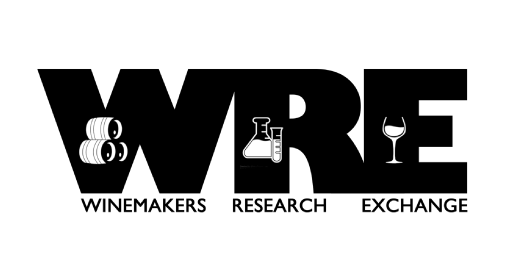How does closure type affect wine aromatics?
When considering which closure type will best preserve the quality of your wine, keep in mind that the “complex aromatic pool is affected in complex ways”1. Wine is made up of many odor-active compounds, each of which will be impacted by oxidative or reductive conditions in different ways at different rates. Some compounds become less perceptible in their reduced form while others become less perceptible in their oxidized form. Also, some will be more affected than others. Figure 1 gives a broad generalization of the evolution of odor active compounds with the presence or absence of oxygen, but the impact on any single wine depends on the wine itself. There is no single study that will answer the question of which closure is best for YOUR wine. However, we can learn from the experience of others. Following is a short summary of published experiments testing the effects of different closures on wine sensory characteristics and wine quality over time.

Figure 1: Generalized evolution of wine in different states of oxidation.
Experimental setup: Sauvignon Blanc bottled with synthetic cork, Saran-tin screwcaps, Saran-ex screw cap, and natural cork the aged in the bottle for 24 months.2
Results: The synthetic cork had the highest OTR. Wine bottled with synthetic cork was oxidized, low in SO2, with some browning and loss in thiols, but was low in H2S. Saran-tin had the lowest OTR. Wine aged in bottles with this closure had no browning, retained SO2, and retained thiols, but was also reduced with pronounced H2S. Cork and Saran-ex showed no reduction but also no browning.
Take home/considerations: Oxygen is not the only enemy. Wine aged under very reductive conditions may show reductive flaws.
Experimental setup: A thiol-rich Bandol Mourvèdre Rosé was bottled with three types of synthetic corks with different OTR1
Results: Wine bottled with a low OTR closure had a reductive mask, muting some fruit aromas. Wine bottled with an intermediate OTR closure showed thiols (grapefruit) without reduction. Wine bottled with a higher OTR cork had “mature” fruits (pears/white fruits) but no grapefruit.
Take home/recommendations: To preserve thiol expression and maximize fruit expression, split the bottling run into two closure types; one lot bottled with an intermediate OTR closure for early release, one set bottled with a low OTR closure designated for later release.
Experimental Setup:
This study included two varieties, Riesling and Gwertztraminer, with two different winemaking approaches to SO2, “optimized” and “reduced” (Table 1), each bottled in 3 types of synthetic corks3.

Results: SO2 decreased rapidly in first year. For both wines, wine made with low SO2 treatments showed rapid oxidation, regardless of the OTR of the closure. For wines with “optimized” SO2 bottled with high OTR closure, quality deteriorated quickly (in the first year). For Riesling, the quality increased in low OTR closure for the first year, then remained stable for 4 years before it was considered oxidized. For Gwertztraminer, wine bottled with the intermediate permeability closure was preferred initially (for first 2 years) with wines described as fruitier, spicier, with aromatic notes. The lower OTR had a reductive mask and presented as less “open”.
Take home/considerations: Riesling is more sensitive to oxidation and can tolerate slight reduction, so it is better to use a less permeable closure. Gwertztraminer is more susceptible to a reductive mask in a low permeability closure, but tolerates oxidation better (opens up), so an intermediate OTR is better.
Experimental setup: A barrel-fermented Hungarian Chardonnay was aged on lees for 12 months, bottled with three types of synthetic closures of varying OTR, then aged for an additional 42 months.1
Results: Wine bottled with a lower OTR closure had an initial reductive mask that eventually evolved. There was no mask with any of the closures after 18 months.
Take home/recommendations: Closure type is less important in wines that are relatively resistant to oxygen.
Experimental Setup: Pinot Noir and Chardonnay aged for 36 months in bottle with natural cork, synthetic, and 3 types of screwcaps2
Results: H2S, methanethiol, and thioacetates (reduced compounds with negative sensory impacts) all decreased with age. Wines bottled with high OTR screwcaps showed the fastest decreases, but also accumulated acetaldehyde.
Take home/considerations: Oxidation and reduction are a continuum. The best closure type depends on the type of wine and amount of aging time.
References
(1) How to Modulate the Wine Aromatic Evolution by Closure Oxygen Ingress; InfoWine; 2021. infowine.com (accessed 2021-11-02)
(2) Furtado, I.; Lopes, P.; Oliveira, A. S.; Amaro, F.; Bastos, M. de L.; Cabral, M.; Guedes de Pinho, P.; Pinto, J. The Impact of Different Closures on the Flavor Composition of Wines during Bottle Aging. Foods2021, 10 (9)
(3) Meistermann, E.; Diéval, J. B. Impact of Closure Oxygen Permeability on the Conservation and Ageing of White Wines in Bottles. InfoWine 2022, 7
